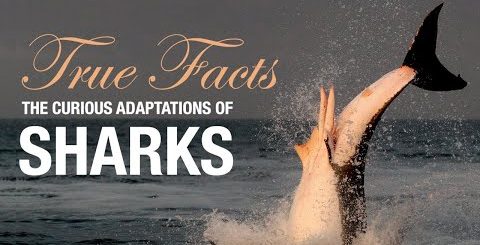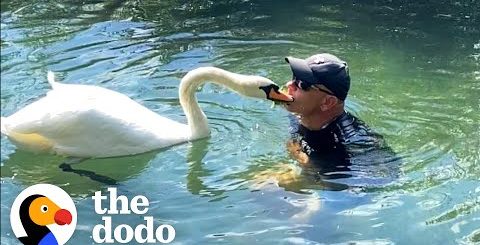True Facts: Tarantulas
Keep exploring at https://brilliant.org/zefrank Get started for free, and
hurry—the first 200 people get 20% off an annual premium subscription.
merch: https://ze-true-store.myshopify.com/
patreon: https://www.patreon.com/truefacts
Mark’s Tarantulas – https://www.youtube.com/c/MarksTarantulas
The Tarantula Collective – https://www.youtube.com/@tarantulacollective
Basin79 -https://www.youtube.com/c/Basin79
Julian Kamzol – mygale.de
Nature In Your Face – https://www.youtube.com/@NatureInYourFace
Tarantulas with Shanti – https://www.youtube.com/watch?v=alVjbGPVGUU
Spider Cafe – https://www.youtube.com/@SpiderCafe
Vanessa Sarges – https://vanessasarges.jimdofree.com/projects/tarantulas/
MicXotic TV – https://www.youtube.com/user/micyow
Tom Moran, Tom’s Big Spiders – https://tomsbigspiders.com/
The Invert Kingdom UK – https://www.youtube.com/@PsyDexOfficial
Eric Aldrich – ericaldrich.net – https://www.youtube.com/@LoFiOutdoors
Instagram: @ericjamesaldrich
Twitter: @EricJAldrich
Special Thanks to:
Dr Kate Archibald, The Maryland Zoo in Baltimore
Dr Michael Bogan, University of Arizona
Dr Paula Cushing, Denver Museum of Nature & Science
Dr Anne Danielson-Francois, University of Michigan
Dr Jason Dunlop, Museum für Naturkunde, Berlin
Dr Sebastian Echeverri, co-host @BBCEarth Podcast
Dr Rainer Foelix, Neue Kantonsschule Aarau
Dr Saoirse Foley, Carnegie Mellon University
Dallas Haselhuhn, Eastern Michigan University
Dr Fernando Pérez-Miles, Universidad de la República de Uruguay
Dr Bastian Rast, Neue Kantonsschule Aarau
Dr Milan Řezáč, Department of Entomology, Crop Research Institute
Dr Cara Shillington, Eastern Michigan University
—
Citations (titles omitted in favor of links to accomodate YT description length restrictions):
Archibald, K. E., Minter, L. J., Lewbart, G. A., & Bailey, C. S. (2014). American journal of veterinary research, 75(10), 929–936. https://doi.org/10.2460/ajvr.75.10.929
Foelix, Rainer & Rast, Bastian & Peattie, Anne. (2012). The Journal of experimental biology. 215. 1084-9. 10.1242/jeb.066811.
Foelix, Rainer & Rast, Bastian & Erb, Bruno. (2009). Journal of Arachnology – J ARACHNOL. 37. 292-298. 10.1636/sh08-106.1.
Rainer Foelix, Bruno Erb, Bastian Rast, Arthropod Structure & Development, Volume 42, Issue 3, 2013, Pages 209-217, ISSN 1467-8039, https://doi.org/10.1016/j.asd.2013.02.005.
Hajer, J., & Řeháková, D. (2019). Biological Communications, 64(3), 169–182. https://doi.org/10.21638/spbu03.2019.301
Kaderka R, Bulantová J, Heneberg P, Řezáč M (2019) PLoS ONE 14(11): e0224384. https://doi.org/10.1371/journal.pone.0224384
Rˇeza ́ č M ( 2 0 1 9 ) PLoS ONE 14(11): e0224384. https:// doi.org/10.1371/journal.pone.0224384
Hüsser M. (2018). ZooKeys, (784), 59–93. https://doi.org/10.3897/zookeys.784.26521
Peattie A. M., Dirks J. H., Henriques S., Federle W. (2011). PloS ONE 6, e20485.
Pechmann, M. Dev Genes Evol 230, 75–94 (2020). https://doi.org/10.1007/s00427-020-00653-w
Fernando Pérez-Miles, David Ortíz-Villatoro; J Exp Biol 15 May 2012; 215 (10): 1749–1752. doi: https://doi.org/10.1242/jeb.069690
Fernando Pérez-Miles, Carlos Perafán, Laura Santamaría; Biol Open 15 December 2015; 4 (12): 1643–1648. doi: https://doi.org/10.1242/bio.013144
Huckstorf, Katarina & Kosok, Gregor & Seyfarth, Ernst-August & Wirkner, Christian. (2013). Zoologischer Anzeiger – A Journal of Comparative Zoology. 252. 76–87. 10.1016/j.jcz.2012.03.004.
Perafán C, Galvis W, Gutiérrez M, Pérez-Miles F. Zookeys. 2016 Jun 29;(601):89-109. doi: 10.3897/zookeys.601.7704. PMID: 27551189; PMCID: PMC4978081.
Quade, F.S.C., Holtzheimer, J., Frohn, J. et al. Sci Rep 9, 6945 (2019). https://doi.org/10.1038/s41598-019-43192-9
Rind F.C. et al. J Exp Biol (2011) 214 (11): 1874–1879. https://doi.org/10.1242/jeb.055657
Silva, V., Biancardi, C., Perafán, C., Ortíz, D., Fábrica, G., & Pérez-Miles, F. (2021). Journal of comparative physiology. A, Neuroethology, sensory, neural, and behavioral physiology, 207(2), 179–190. https://doi.org/10.1007/s00359-020-01456-0
Tsai, Y.-C. (2018) Br J Dermatol, 178: e227-e227. https://doi.org/10.1111/bjd.16329
von May ET AL. (2019). Amphibian and Reptile Conservation. 13. 65-77.
Wirkner, C.S., Huckstorf, K. (2013) https://doi.org/10.1007/978-3-642-33989-9_2








Keep exploring at https://brilliant.org/zefrank Get started for free, and
hurry—the first 200 people get 20% off an annual premium subscription.
@Zeev tastefully used “bad” language is patently hilarious by every normalized standard of comedy. It’s an aspect of culture and can be a tool used to great effect. If you don’t like it, it’s your issue to grapple with not the artist’s.
Thank you for all the effort and hard work making / creating your video’s!
Absolutely brilliant…true facts! See what I did there!!!? 😆 🤣 😂
Spiders 🕷 I love them!
ZEFRANK where have you been?I have missed your content tremendously, thanks for another upload and have a pleasant day.
I almost always have night mares. They’re going to be worse tonight. Thanks for that.
so damn good. lay of the bad language. it cheapens your material. this is high quality stuff. thank you zefrank, i’ve been with you since 20 years ago. always loved your mindmelds.
“Science is sort of a long, passive-aggressive argument about everything” is now my new favorite definition of science.
This quote needs to go on a T-shirt
@Philip Spencer Fauci was not doing science he was doing “informed policy”. Science is what he did in his career before being appointed. He tried to be informed as best he could and tended to do the safe thing rather than the bold thing [in his estimation].
@Creative Liberties Were Taken I have a fridge magnet that defines the scientific method as “Step 1: Fuck around Step 2: Find out Step 3: Challenge your friends to prove you wrong Step 4: Repeat”
You would enjoy miniminiuteman then lol
Mine is
“Science is fun”
*portal slowly intensifies*
I got a tarantula as a teenager without knowing anything about tarantulas and the first time it molted I honestly thought it died. It was late so I figured I’d deal with cleanup the next day. When I got home from school I picked up the molt and was like, that ain’t right, and the tarantula crawled out from under its log and was like Yo, whattup? Had dozens of pets of dozens of varieties and none were as gentle as that tarantula (Chilean Rose)
that is so wholesome and cute x3
When I got my first tarantula as a 12 yo (a B. smithi) I knew that they molt, how it looks like and how to notice an upcoming molt. But still when she had her first molt at my home it was at night while I was sleeping. Next day I look into the enclosure and see more legs than usual, so I was like ”wtf how are there two spiders all of a sudden?!”.
Omgg how does it feel to live my dream. Tarantulas are so beautiful
Same! I had a mexican painted tarantula when I was 15 yo. I was so sad when that happened. I thought it was my fault because I hadn’t taken good care of her.
I got a rose hair as my first tarantula too and after about 8 or 9 years of having her I got 3 more, a togo starburst baboon, green bottle blue, and a metallic pink toe
No matter how Zefrank’s narrator describes things, it always manages to be funny yet still informative at the same time, truly a one of a kind
That’s how He Do!
@Metal Mama Sue
Haha I was gonna say. He’s totally a one-man show just about.
Zefrank is the narrator and snarky science guy of his own channel 😃👍
I have a tarantula as a pet, they really are cute, and really beautiful. I used to be scared of spiders, but the more you learn about them, the more you appreciate how amazing they are.
@Penny Trui I’m glad you’re trying your best not to kill them 🙂 you should watch videos of jumping spiders. It may sound scary to an arachnophobe but they’re actually adorable and extremely intelligent and lots of people have said that they’ve cured their arachnophobia from watching videos of them.
Cute???? My scary ass is like sorry nope I’m so terrified watching this 😳. Honestly, I’m trying to get rid of my fear of spiders but it’s so freaking hard that my hair immediately stands up when I see one. Right now I’m just working on not killing cellar spiders since they kill other spiders. I rather have tiny cellar spiders than big house spiders
Regularly seeing and observing my friend’s tarantulas was supposed to alleviate my strong irrational arachnophobia but all that happened was my brain went “tarantula in a glass box? You’ve become unafraid of it, so it must not a spider. Cellar spider in the corner above the light? Fuckin PANIC”
kind of a shame they’re not developped enough to be real pet. Then again squids can go depression mod if you don’t stimulate them.
Yes, I’m so glad I get to see how derpy and majestic they are now that I’ve worked on my fear
I am a veterinarian. One day I had a potential client call on the phone with quite a conundrum. He had a tarantula and he was, by his own admission, afraid of it. This guy wanted me to do an operation on his tarantula and remove its fangs because, as I mentioned earlier, he was scared of being bitten. I had to explain to him the several things wrong with that idea: 1) If this were to be done I don’t know how i would anesthetize the spider since they don’t have lungs for inhalant anesthesia and I certainly couldn’t inject the spider with valium. I don’t even know if valium will WORK on a spider but I know it would leave a very big leaky needle hole, plus I’d have to get the spider to hold still for it and, well, that wasn’t going to happen. I could have placed the spider in a tank of anesthetic gas but how to monitor it escaped me, as it doesn’t have the usual pulse and respiration, nor could I use a pulse oximeter on it. Even if it would work (which it wouldn’t) I didn’t have one small enough. There would be a very fine line between asleep spider and dead spider and one could become the other quite rapidly.
2) In veterinary school we are, quite frankly, taught how to KILL arachnids and insects (ticks and fleas, respectively) rather than operate on them. I suppose I could have opened up a whole new category of service for people with pet arachnids, but I’m sure I’d soon get someone wanting me to de-venom sac their Deathstalker Scorpion and I’m not going there.
Finally, the 3rd problem with the idea is that if I ‘defanged’ his spider it would very quickly starve to death because it couldn’t inject any venom in its prey. The guy sat quiet for a minute and then said, “I guess a tarantula won’t make a good pet for me if I’m afraid of it.” I agreed. He thanked me and hung up. That still ranks as one of the oddest telephone conferences I’ve ever had.
@Viktor Jönsson declawing cats…
Defanging happens on accident occasionally, but the fact is even if you managed to defang his spider and he managed to help it eat (a very hands on process) by making a cricket soup for it to suck up, if it survived long enough to molt (aka grow) it would grow its fangs back!!
i inherited a cat that had been declawed (i am not the one who declawed it) and i’m not arguing that declawing the cats is good. i’m just gonna say that my cat didn’t really seem to be in any pain at all? she went about and acted like a normal cat and often would go to the scratching post. .or more often go to the side of my couch and make the clawing motions like she was trying to scratch it up and her paws would just slide across it because she had no claws. . .it was as if she didn’t even know the claws were missing
again, i would never do this on purpose to a cat, (edit : i was misinformed about what the actual procedure was). i googled it and yeah it does seem like they cut the first segment of bone phalanges off of each “finger” the cat has, because there are claw cells embedded in the bone, so they have to remove the entire bone to keep the claws from growing back and if they do it wrong then the claws grow back crooked and cause problems, but if they do it right, it’s a clean cut that heals. i dunno. i observed my cat and she never showed any signs of being in pain. she lived for 15 years.
.
.
in the end, i agree trying to defang a spider is a bad idea, because how woild you even do that? may as well not even own a spider then.
.
although i had often wondered what if someone had a pet cobra snake and defanged it?
i do know that i read if you remove a scorpion’s stinger, then the scorpion can’t poop anymore amd it will die from constipation. . (i am pretty sure they don’t poop out their stinger?)
dunno why people want deadly creatures as pets and then want to remove the parts that make them deadly. just get a harmless animal for a pet that has been bred to be harmless and docile towards humans then.
but then again, maybe those type of people shouldn’t own a pet. there are a lot of people that have pets and aren’t responsible enough that they don’t even know how to care for them and shouldn’t have them
@cam Exactly right. I’ve ALWAYS loved nature’s underdogs like snakes & reptiles. You would be astounded at how many people buy them without knowing sweet f*ck all about them.
We’ve rescued turtles in tanks that were WAY too small and the owner didn’t know WHY the turtle kept banging against the sides of the tank, 🤦♀️ an Iguana that ‘wouldn’t eat’ because the owner thought cold blooded meant they LIKED the cold, instead of tropical warmth and humidity, I could go on & on.
Perhaps what’s worse is the pet stores that sell them to people who have no clue, and don’t take time to educate & tell them what all they NEED to keep them happy and thriving.
It’s honestly so wrong, pets of ANY kind are NOT disposable and it’s OUR responsibility to learn how to care for them properly so they live a long happy life.
If you’re NOT willing to do that, you have NO business owning them.
@The1nvisibleJeevas yeah, i believe so too, but people do in many cases mutilate their pets/livestock to make them more manageable
Wow! You nailed this Episode. Hillarious and extremely informative. Amazing job! Thanks for letting me contribute footage and be a small part of this. 🖖💚🕷
TC…. YOU MADE IT
@Metal Mama Sue In other words, it’s spam…
@Metal Mama Sue at least thats what it is, it would be awful if it were spider-man and elsa
@Flash bang NO it isn’t, don’t click on the link folks. It’s a video for making food. 🙄🤦♀️
Phenomenal job!
As someone who appreciates spiders, especially tarantulas, I love this. I also love that first Koalas didn’t give a f***, now crickets. What’s next?
honey badgers. gotta stick with the classics 😉
I’m arachnaphobic but this was still really interesting. I love these True Facts videos. Educational and entertaining! And the cricket song was just epic!!
Let me tell you something. I am extremely terrified of spiders and bugs. Like seriously scared. However when I watch your videos about bugs and spiders, my fear goes away because you make things interesting and funny. I wish you were my teacher when I was in elementary school.